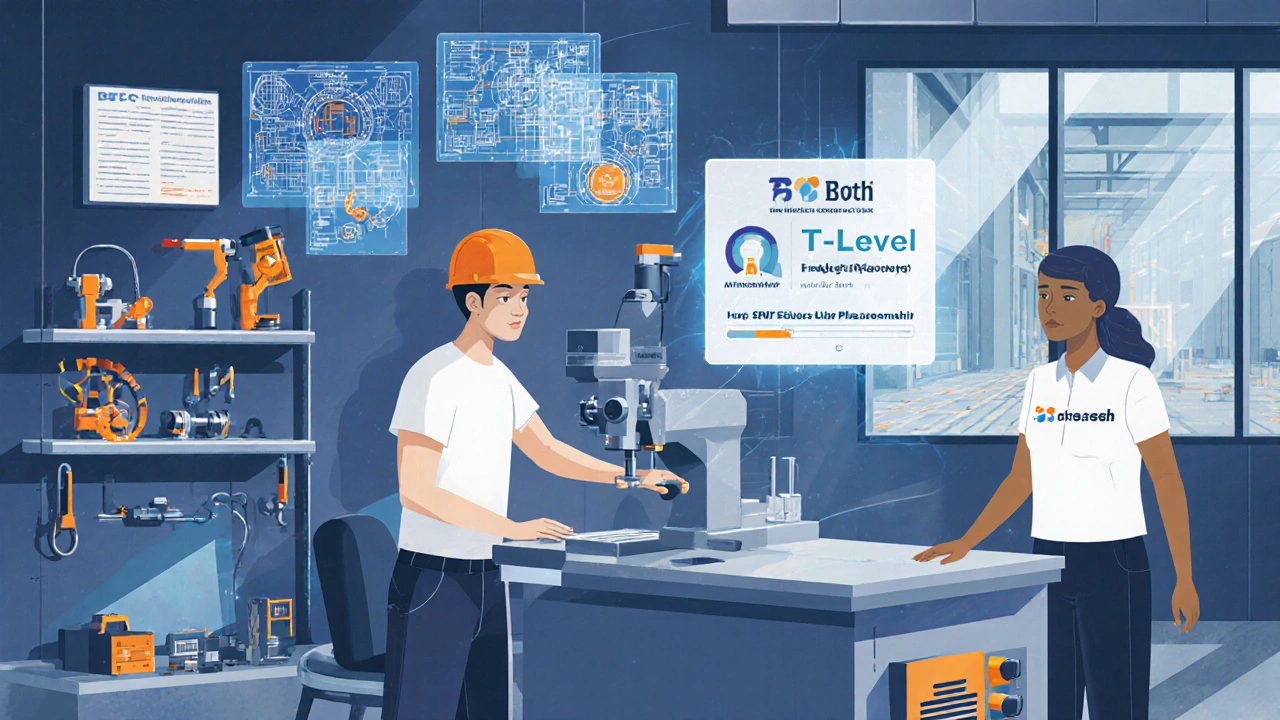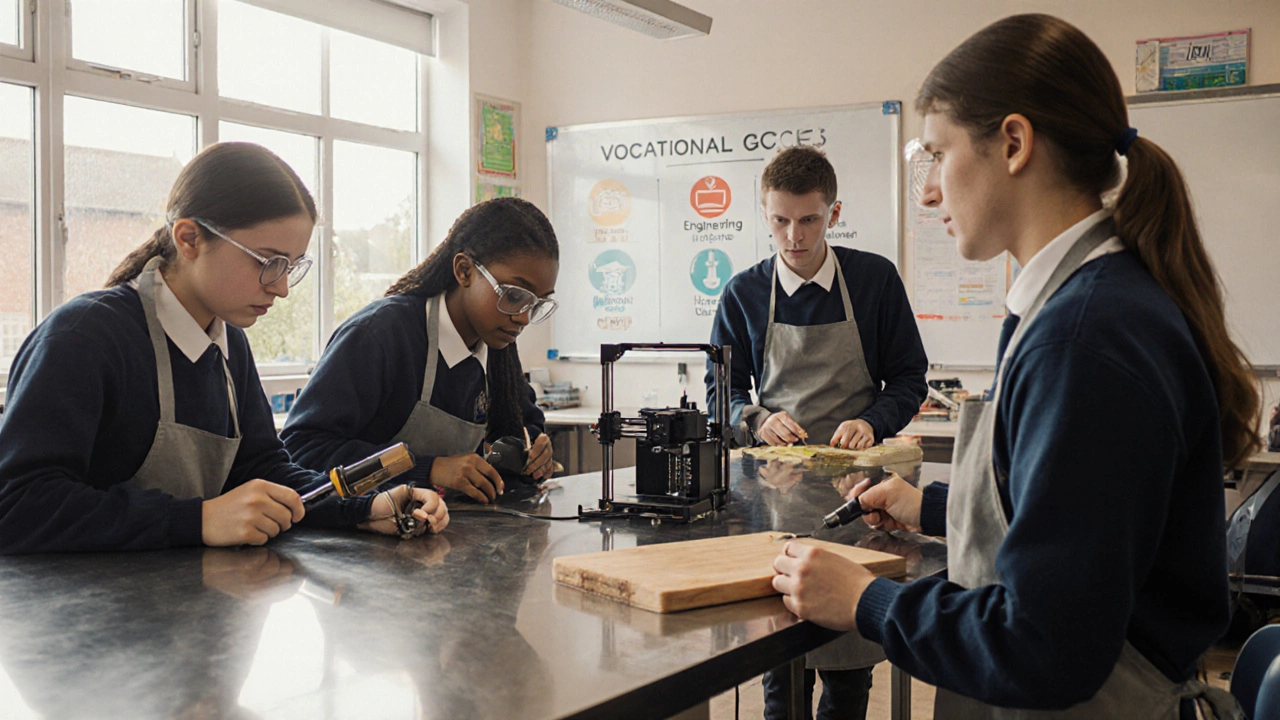Vocational education is a type of schooling that focuses on teaching specific trades, technical skills, and job‑ready knowledge rather than purely academic subjects. In the UK, it sits alongside the traditional academic route and gives students a practical pathway straight to the workplace or further study.
Why the Term ‘Vocational’ Shows Up in School Talk
When you hear “vocational” attached to a school programme, think “career‑oriented”. The word comes from the Latin vocare, meaning “to call”. Schools that offer vocational tracks are essentially calling students toward a particular profession.
How Vocational Fits Into the UK School System
In England, the National Curriculum sets out core subjects for all pupils, but schools can supplement this with technical education. From Year 9 onward, many secondary schools introduce optional blocks of Career and Technical Education (CTE), giving learners a taste of real‑world work.
- Key Stage 3 (Years 7‑9): Introduction to basic practical skills.
- Key Stage 4 (Years 10‑11): Vocational GCSEs such as Food Preparation, Engineering, or Health & Social Care.
- Post‑16: Options include A‑levels (academic), T Levels (technical), or apprenticeships.
Common Types of Vocational Courses
Schools and colleges run a variety of programmes, each with its own credential:
- Vocational GCSEs - practical qualifications taken alongside core subjects.
- T Levels - two‑year courses that combine classroom learning with industry placement (up to 45 days).
- Apprenticeships - on‑the‑job training paired with study, often leading to a Level 2 or Level 3 qualification.
- Certificate Courses - short, focused modules such as Digital Marketing or Automotive Technology.
All of these aim to develop a ‘skill‑first’ mindset that employers value.
Pathways and Qualifications: From GCSE to FE
Understanding the qualification ladder helps families plan ahead:
- GCSE (Level 2) - the first step; many vocational subjects are offered at this stage.
- A‑levels - traditional academic route; not mandatory for vocational pathways.
- T Levels - new technical route, equivalent to three A‑levels, but with a work‑experience component.
- Further Education (FE) colleges - house most apprenticeships, BTEC Nationals, and specialist diplomas.
Students can combine routes, e.g., a student might finish GCSEs, take a T Level in Engineering, then move straight into an apprenticeship with a local manufacturer.

Benefits of Choosing a Vocational Path
There are several clear advantages:
- Job readiness - learners leave with hands‑on experience that matches employer needs.
- Higher earnings potential - many trades (electricians, carpenters, IT technicians) command strong salaries early on.
- Reduced dropout rates - students who see a direct link between lessons and a career stay engaged.
- Flexibility - vocational qualifications are stackable; you can keep adding higher‑level certifications.
Challenges and Common Misconceptions
Despite the perks, some hurdles exist:
- Stigma - some still view vocational routes as “less academic”. In reality, many high‑skill jobs require deep technical knowledge.
- Limited availability - not every school offers a wide range of technical subjects, especially in rural areas.
- Alignment with industry - curricula must stay up‑to‑date with fast‑moving sectors like digital tech.
Schools combat these issues by partnering with local businesses and updating course content regularly.
How Schools Implement Vocational Learning
Effective vocational programmes rely on three pillars:
- Industry partnership - companies provide equipment, guest speakers, and placement opportunities.
- Qualified instructors - teachers often hold industry certifications in addition to teaching credentials.
- Dedicated facilities - workshops, labs, and simulated work environments replicate real jobs.
For example, a school with a strong apprenticeship program might host a weekly “tech‑shop” where students repair devices under the mentorship of a local IT firm.

Head‑to‑Head: Vocational vs Academic Education
| Aspect | Vocational Education | Academic Education |
|---|---|---|
| Primary Focus | Practical skills and workplace readiness | Theoretical knowledge and critical thinking |
| Typical Qualifications | GCSE Vocational, BTEC, T Level, Apprenticeship | GCSE, A‑level, IB, University degree |
| Assessment Method | Portfolio, practical exams, on‑the‑job assessment | Written exams, essays, oral presentations |
| Post‑16 Pathways | Direct employment, FE college, apprenticeship | University, further A‑levels, professional courses |
| Industry Link | Strong, often embedded in curriculum | Variable, more theory‑focused |
Tips for Parents and Students Considering Vocational Options
- Research local school offerings - check the school’s prospectus for vocational GCSEs, BTECs, or T Levels.
- Talk to current students - they can share how coursework translates into real‑world tasks.
- Visit a workplace - many schools arrange “career days” with partner companies.
- Understand the qualification level - Level 2 equals GCSE, Level 3 equals A‑level, higher levels open senior roles.
- Plan for progression - consider a pathway that stacks, e.g., GCSE → T Level → apprenticeship.
Frequently Asked Questions
Is vocational education only for students who don’t want university?
No. Many vocational routes, especially T Levels, are designed to lead straight into university‑level study or highly skilled apprenticeships. The goal is to match education with career goals, not to restrict options.
Do vocational subjects count toward the 30 credit core curriculum?
Yes. Vocational GCSEs and BTECs can fulfill the optional ‘elective’ credits in the National Curriculum, giving schools flexibility to meet the 30‑credit requirement.
How long does a typical apprenticeship last?
Most Level 2 or Level 3 apprenticeships run for 12‑24 months, while higher‑level programmes (e.g., engineering) can extend to 3‑4 years, combining work and study.
Can I switch from an academic A‑level track to a vocational T Level?
You can. Schools often allow students to change pathways at the end of Year 11, provided they meet entry requirements for the chosen T Level.
What industries most need vocationally trained graduates?
Manufacturing, construction, health and social care, digital technology, and hospitality are among the sectors with the highest demand for vocational talent.
Next Steps
Ready to explore vocational options at your school? Start by downloading the school’s curriculum guide, schedule a meeting with the career adviser, and list three careers that interest you. From there, match those careers to the relevant vocational qualifications - whether it’s a Food Preparation GCSE, a T Level in Engineering, or an apprenticeship with a local firm. Taking these concrete steps turns curiosity into a clear career roadmap.





Write a comment